Royals Extra Update: My pick for the Queen Elizabeth II Memorial in London
The shortlist of five proposals for a memorial to mark her 70-year reign has been unveiled, and one beats the others by a mile
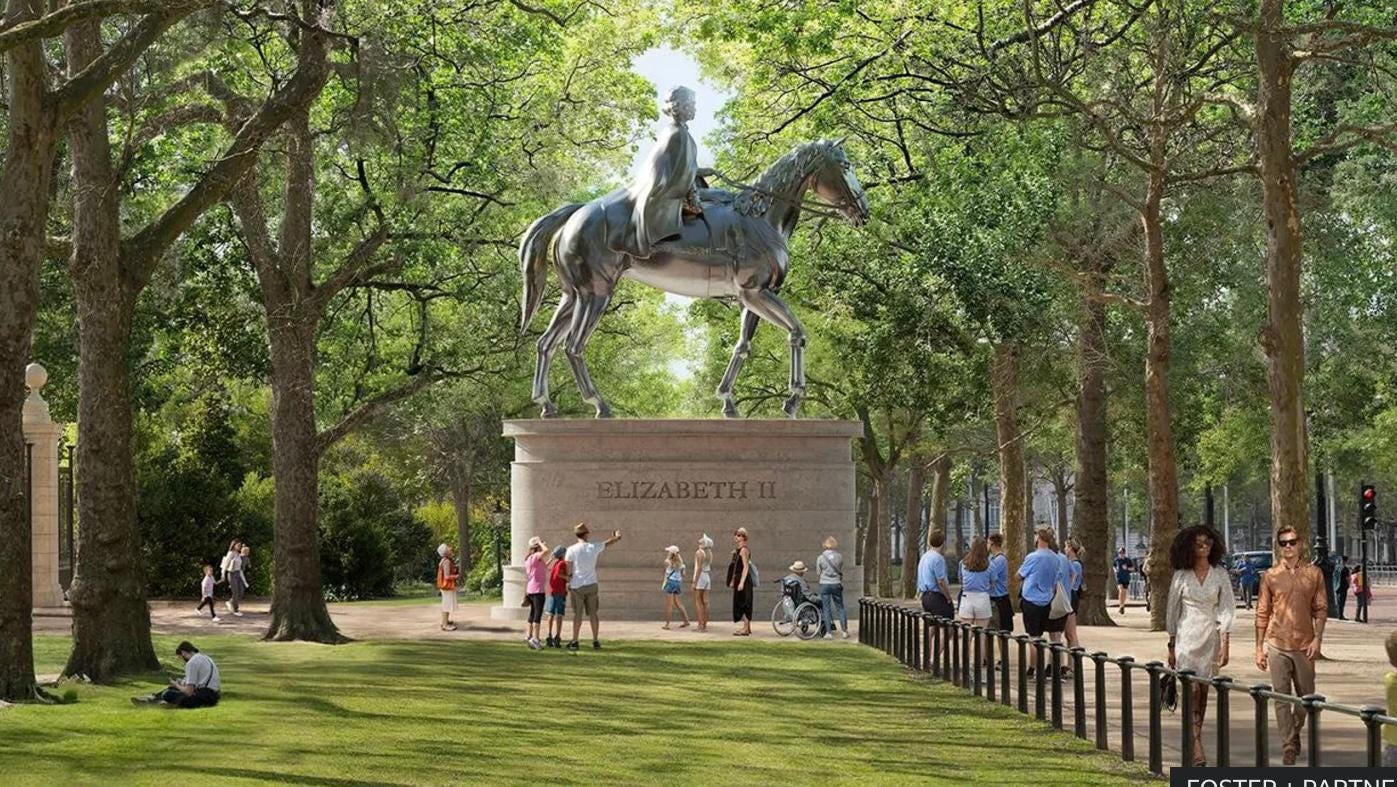
The Queen Elizabeth Memorial Committee today released the five designs proposed for the Queen Elizabeth II Memorial in London. They can be seen in an online Finalists Gallery here: https://competitions.malcolmreading.com/queenelizabethmemorial/gallery.
Public comment will be open until May 19, and the Committee will make its final decision in June. The selection of figurative sculptors would likely be made later this year. King Charles III, while not an official member of the committee, will be a crucial voice—probably decisive, although the official statements don’t say so.
In my Royals Extra on April 14 (The Queen Elizabeth II Memorial in London Begins to Take Shape), I wrote about the goals for the memorial as well as the significance of its placement in St. James’s Park on the Mall at the Marlborough Gate. Today’s announcement does not specify when the memorial would be finished. Given the complexities of the planning process and construction, it could be two or three years before an unveiling. My sources tell me that the best hope would be for a groundbreaking to take place on the centenary of the Queen’s birthday on April 21, 2026.
An elegant equestrian statue
My choice, hands down, is the exceptionally beautiful design by the iconic modernist architect, eighty-nine-year-old Norman Foster, Baron Foster of Thames Bank. It features an elegant equestrian statue of the Queen on a perfectly proportioned plinth facing the Mall in front of the Marlborough Gate. It’s exactly where it should be, positioned to be saluted by passing parades and seen up and down the Mall from the Victoria Memorial to Admiralty Arch. Two of the other designs have the Queen on horseback, but neither is in this prime position. Of the remaining two designs, one has no representational sculpture at all, and the other reimagines the Queen as a giant gilded oak tree. Enough said.
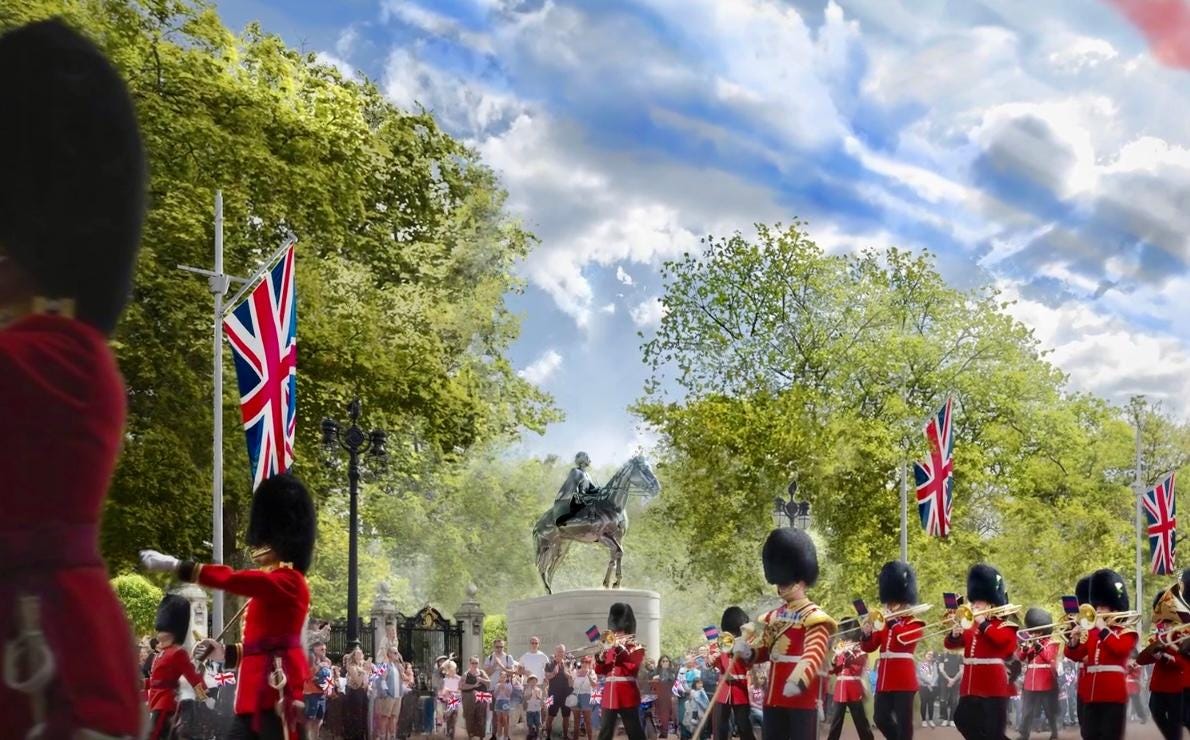
Lord Foster’s equally brilliant stroke is the creation of a “Prince Philip Gate” on the other side of St. James’s Park next to Birdcage Walk, with a statue of the Queen and Philip standing side by side, a fitting memorial to her “strength and stay” to whom she was married for 73 years until his death in 2021 at age 99.
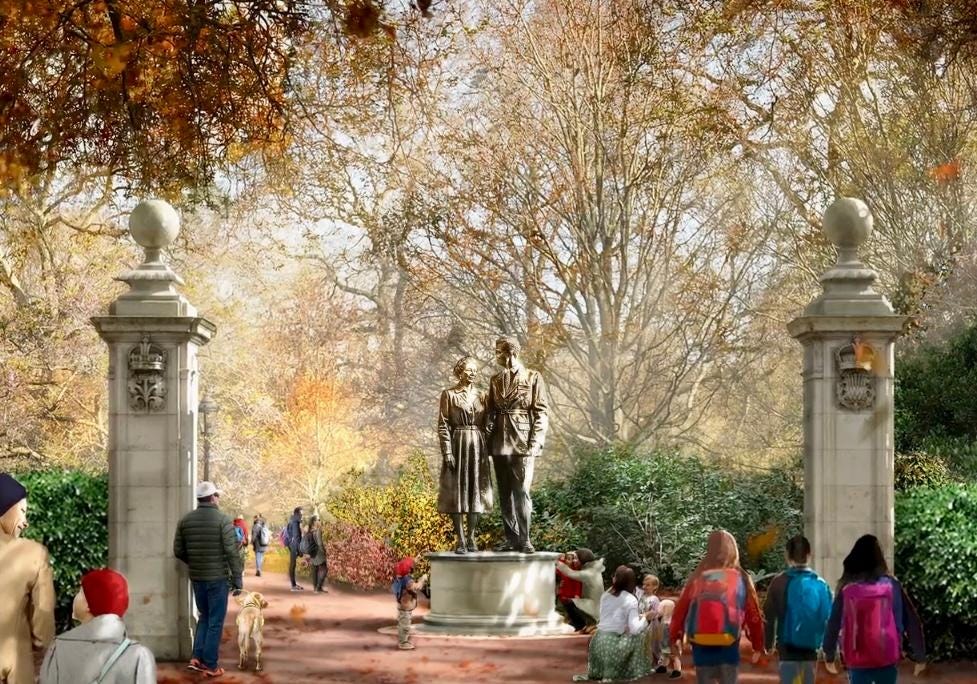
“The Queen’s voice is ever present”
Between the two statues, Lord Foster has reimagined the landscape of St. James’s Park: “The Commonwealth Garden and Yinka Shonibare’s Wind Sculpture define a space for reflection and shared experience; the Community Garden’s artistic installations celebrate the diversity of the United Kingdom; and the Unity Bridge is a jewel crowning the path and Memorial journey. Throughout, the Queen’s voice is ever present through audio installations and inscriptions, alongside an ever-evolving digital conservatory accessible from the site, or anywhere in the world.”
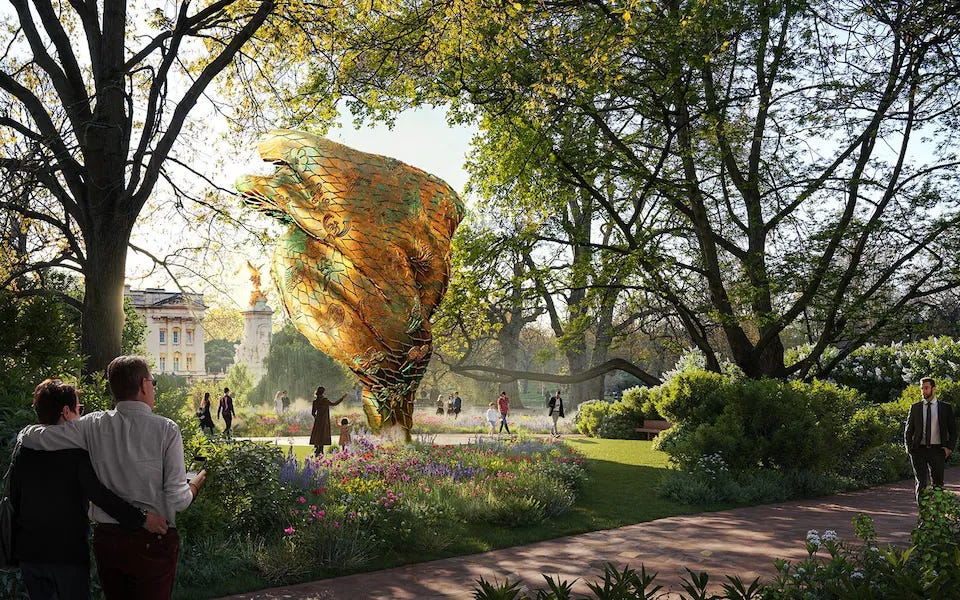
Lord Foster has had a huge impact on the London skyline, with buildings such as the spiraling skyscraper nicknamed “The Gherkin” and 8 Canada Square, the towering steel and glass office building in Canary Wharf. He also designed the popular Millennium Bridge across the Thames from the Tate Modern to St. Paul’s Cathedral, as well as the soaring Queen Elizabeth II Great Court in the British Museum. For the Queen Elizabeth II Memorial, he has drawn on his respect for history, with a nod to John Nash’s “original romantic landscape” of St. James’s Park and his “formal axial route to Buckingham Palace, The Mall.” Nash’s creation, which also included Birdcage Walk, was commissioned by King George IV in 1825.
“Leadership, loyalty, and regal humility”
It is worth noting that Norman Foster met the Queen many times over five decades, and she awarded him the Order of Merit in 1997. It is the monarch’s most prestigious personal honor, recognizing outstanding service in the arts, literature, science, and the military, with only 24 members at a time. On her death in September 2022, Lord Foster praised her “leadership, loyalty and regal humility.”
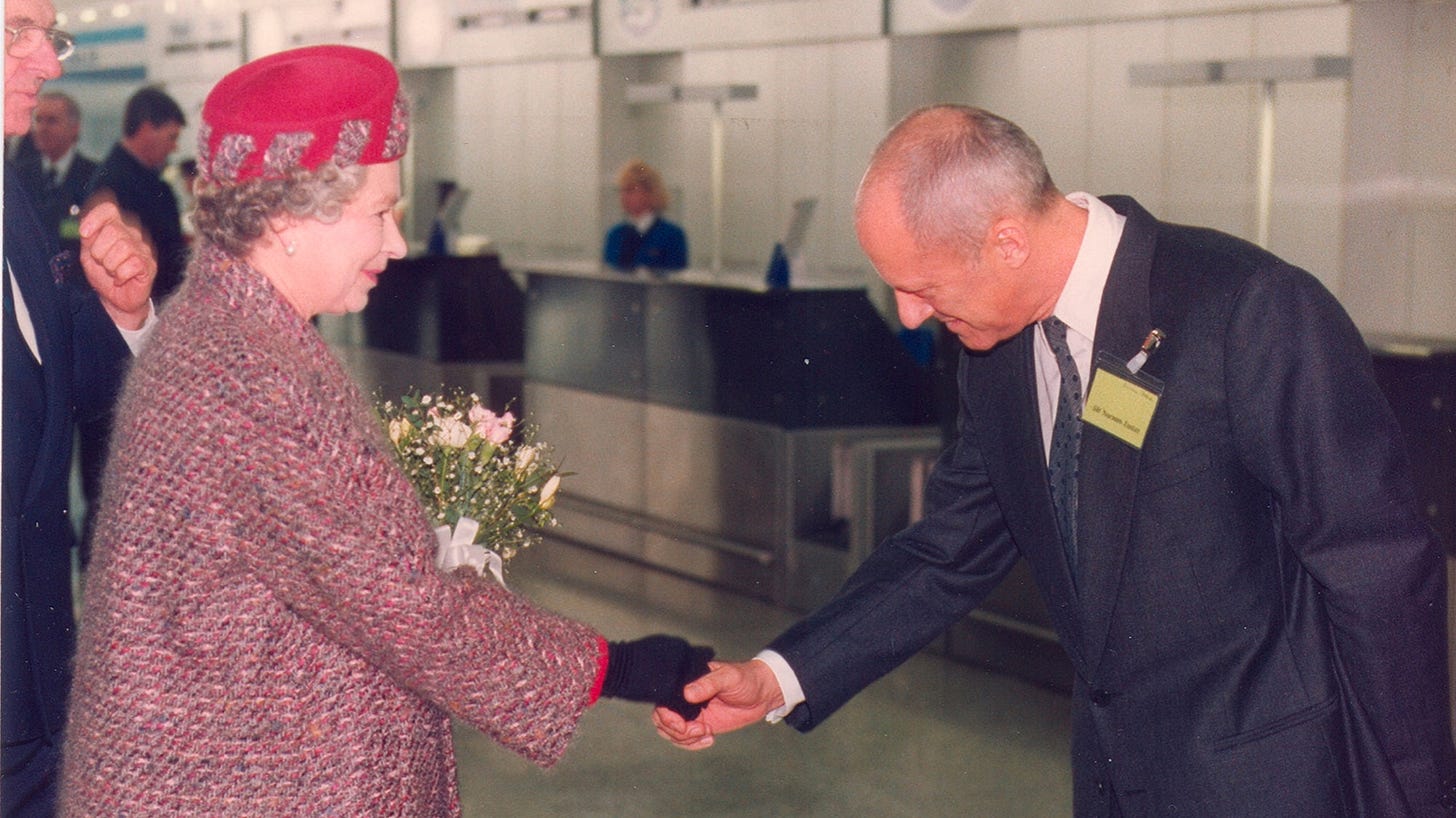
Lord Foster’s understanding of the Queen was reflected in the video that accompanied his firm’s presentation, and his words are compelling: “She was wonderfully formal when the occasion demanded and warmly informal when she engaged with people, with individuals.” His design, he said, is meant to incorporate “those two themes of formality and informality” that echo the original designs of John Nash.
“Symbolic of the Queen as a powerful force”
Describing the memorial between the two statues, he said, “We are inspired by the tradition of the English landscape movement, so instead of the existing direct route we create a family of gardens connected together by a network of meandering paths which define them, the Commonwealth Garden, the Community Garden, all linked together by a new bridge, the Unity Bridge,” which he called “symbolic of the Queen as a powerful force for bringing together nations, countries, the Commonwealth, charities, the armed forces, an extraordinary life.”
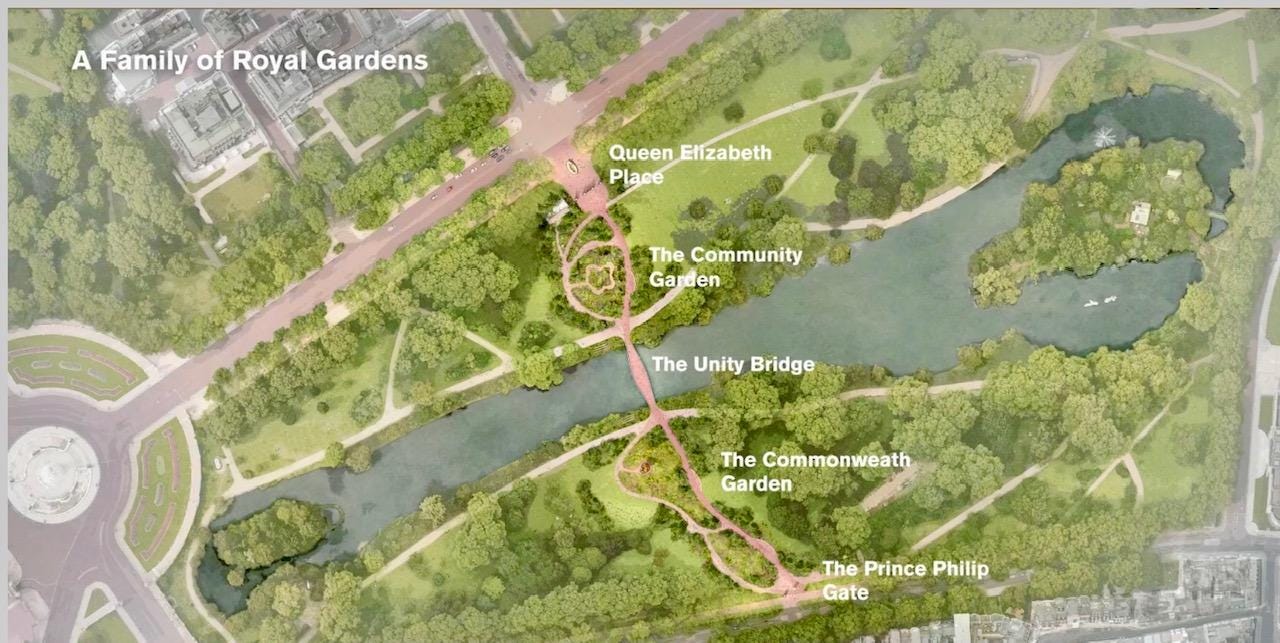
It’s also worth noting that when King Charles was the Prince of Wales, he was an outspoken critic of modernist architects including Foster and his “Gherkin.” In 2009 when Charles stopped the construction of a contemporary development by architect Richard Rogers on the site of the Chelsea Barracks in London, Norman Foster was among the ten prominent modernist architects who criticized the prince for trying to “skew the course of an open and democratic planning process.”
Let’s hope that the King can put those past disagreements aside and embrace a memorial that would do his mother proud.




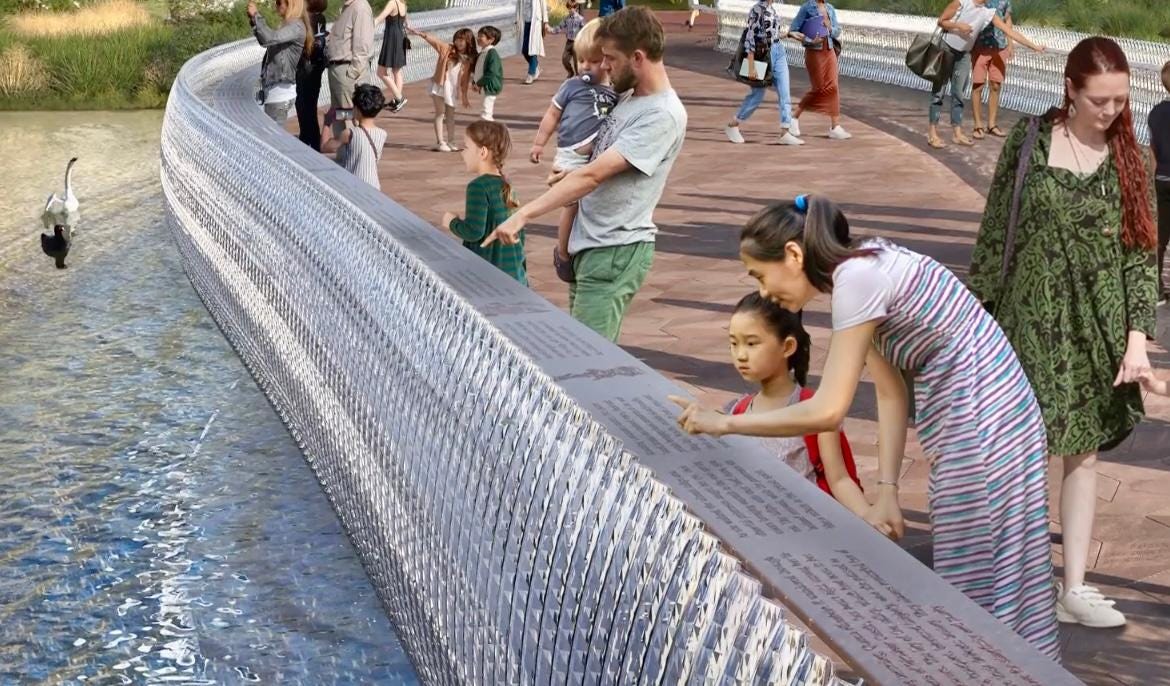
A brilliant commentary Sally on the merits of Lord Foster's design proposal. As an American, so very often we saw the queen and her horses and always, never far from her side was her man, Prince Phillip.
The recognition of the Queen with Prince Philip seems especially appropriate , in addition to the equestrian statue.